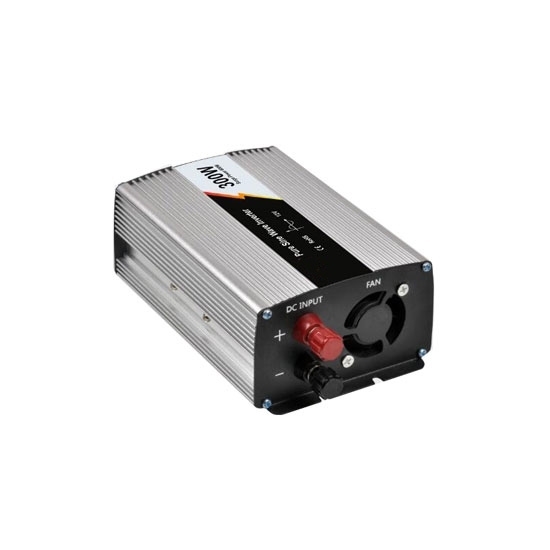
The power inverter (vehicle power supply) is a kind of convenient power converter that can convert DC12V direct current into AC220V alternating current which is the same as mains power for general electrical appliances.
How to choose the right power inverter? Following the points below and you will choose the right one easily.
Rated output voltage
Within the allowable fluctuation range of the specified input DC voltage, it indicates the rated voltage that the inverter should be able to output. The stable accuracy of the output rated voltage value is generally stipulated as follows: During steady-state operation, the voltage fluctuation range should have a limit, for example, its deviation should not exceed ±3% or ±5% of the rated value. Under the dynamic condition of load sudden change or other disturbance factors, the output voltage deviation should not exceed ± 8% or ± 10% of the rated value.
Unbalance of output voltage
Under normal working conditions, the unbalance of three-phase voltage output by the inverter (the ratio of reverse sequence component to positive sequence component) should not exceed a specified value, generally expressed in %, such as 5 % or 8%.
The waveform distortion of the output voltage
When the inverter output voltage is sinusoidal, the maximum allowable waveform distortion (or harmonic content) should be specified. It is usually expressed as the total waveform distortion of the output voltage, and its value should not exceed 5% (10% is allowed for single-phase output).
Rated output frequency
The frequency of the inverter output AC voltage should be a relatively stable value, usually 50Hz of the power frequency. The deviation under normal working conditions should be within ±1%.
Load power factor
It characterizes the ability of the inverter to carry inductive or capacitive loads. Under sine wave conditions, the load power factor is 0.7 to 0.9 (hysteresis), and the rated value is 0.9.
Rated output current
Indicates the rated output current of the inverter within the specified load power factor range. Some inverter products give the rated output capacity, which is expressed in VA or KVA. The rated capacity of the inverter is when the output power factor is 1 (ie pure resistive load), the rated output voltage is the product of the rated output current.
Rated output efficiency
The efficiency of the inverter is the ratio of the output power to the input power under the specified working conditions, expressed in %. The efficiency of the inverter at rated output capacity is full load efficiency, and the efficiency at 10% of rated output capacity is low load efficiency.
Protection
- Overvoltage protection: For inverters without voltage stabilization measures, there should be output overvoltage protection measures to prevent the negative cutoff from being damaged by output overvoltage.
- Overcurrent protection: The overcurrent protection of the inverter should be able to ensure timely action when the load is short-circuited or the current exceeds the allowable value to prevent it from being damaged by inrush current.
Starting characteristics
It characterizes the ability of the inverter to start with load and the performance during dynamic operation. The inverter should be guaranteed to start reliably under rated load.
Noise
Transformers, filter inductors, electromagnetic switches and fans in power electronic equipment will generate noise. When the inverter is in normal operation, its noise should not exceed 80dB, and the noise of a small inverter should not exceed 65dB.
